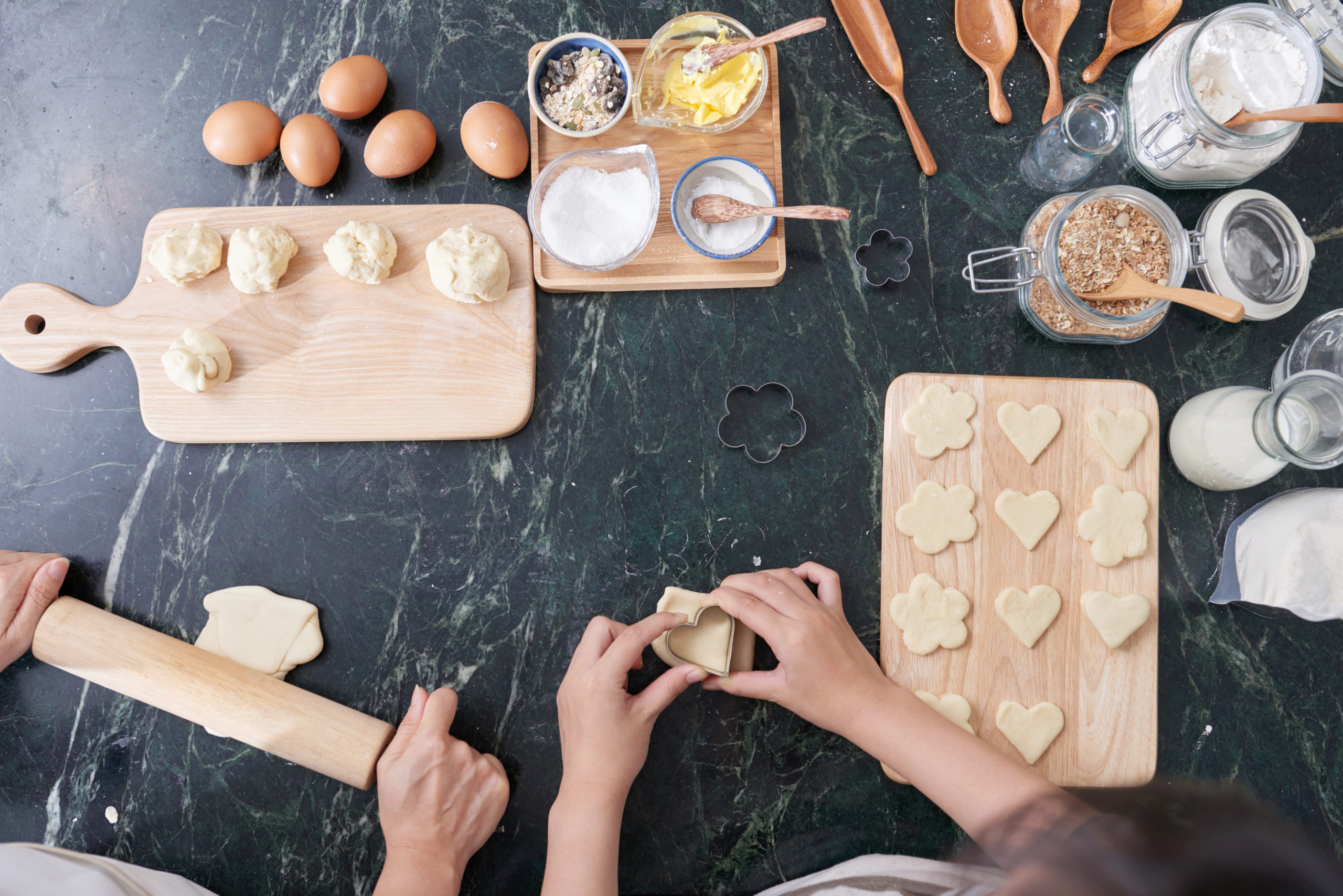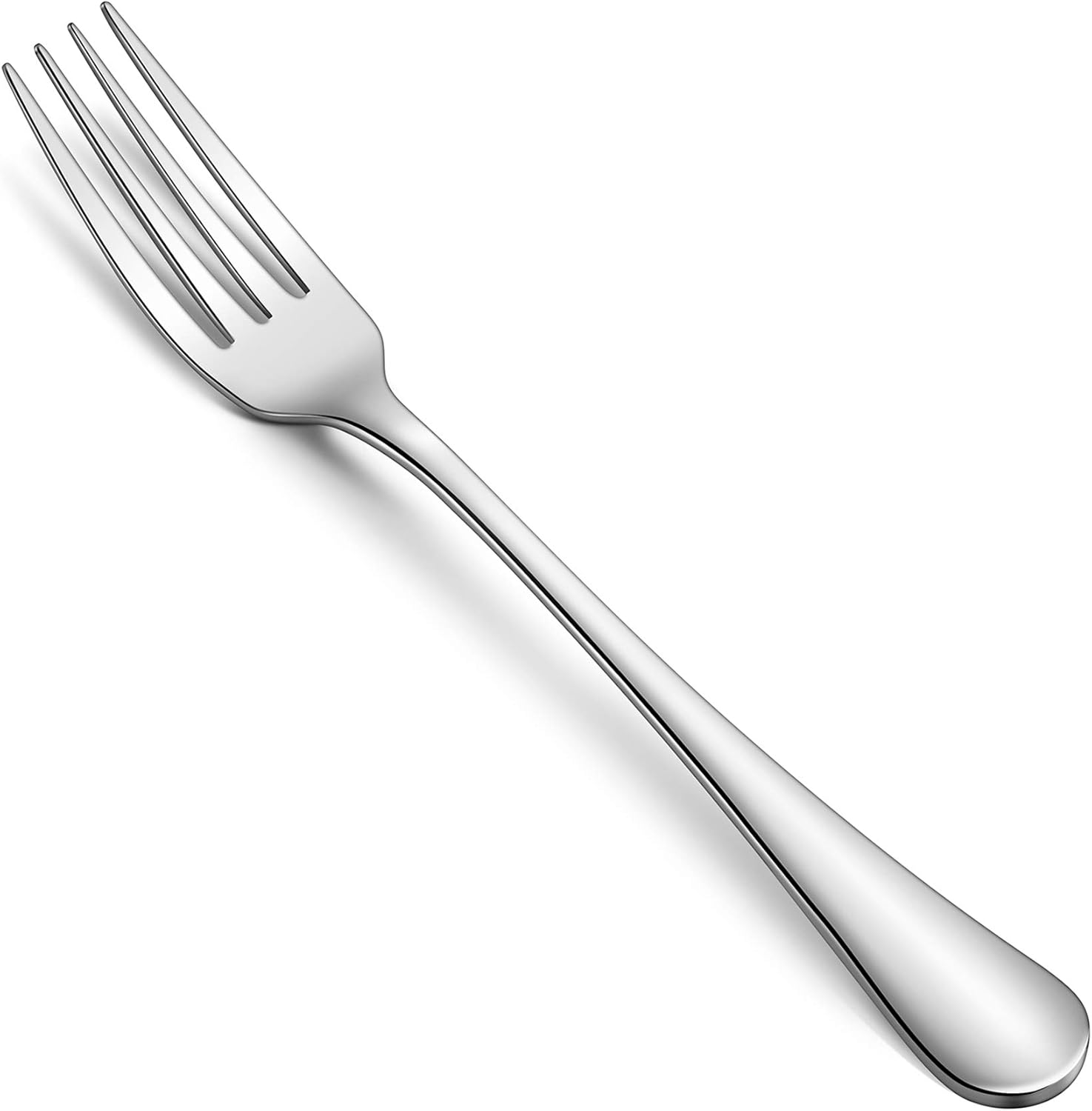Updated on December 19th, 2024
As our knowledge in baking graduates, we grow to assume that specific tools and equipment are irreplaceable. The pastry cutter, for example, is one of those tools we never imagine would ever need an alternative. Its design is unique, and its function straightforward, making most people believe nothing else can do its job. But like everything else in the kitchen, the reverse is the case.
For some reason, you may find yourself without your pastry cutter. Perhaps you misplaced it and can’t go looking for one at the moment. Or maybe you’ve been used to flour mixes and never needed to cut butter into the flour by yourself. Whichever the case, you should consider options to replace a pastry cutter. And the first step is to understand what it does in baking.

What is a Pastry Cutter?
A pastry cutter (a.k.a. dough cutter, pastry blender, or butter cutter) is a handheld tool used to combine fat with flour for baking processes. The gadget comes in a U shape, with a handle between the free edges, usually wood or plastic. The curved end usually comprises a set of metal blades or wires, which cut through the solid fat when pressed on it. And its butte remixing technique is the best for preparing flour meant for pies, biscuits, crackers, and scones.
Why Use the Pastry Cutter?
You’ve probably come across specific recipes that say to ‘cut the fat or butter…’, right? Such recipes mean dividing them into smaller chunks that can distribute through the flour and dry ingredients. Such recipes depend on this fat texture to achieve a flaky, crumbly result. And in such cases, a pastry cutter is the best way to cut the solid fats into the perfect sizes required.
Also, the pastry cutter allows the proper division of solid fats without causing them to melt too soon. Some people use their hands to mix butter into flour for such recipes but forget that the palms generate heat. This heat is enough to melt the butter as you mix, causing it to incorporate into the flour and resulting in non-flaky baked goods. But pastry cutters avoid this, and the cold butter used stays cold till the combination is completed.
Using a pastry cutter is also a cleaner way to distribute solid fat through the flour. Since the tools keep your hands well away from the mixture, you’ll barely have to worry about spills from the mixing bowl. You’ll also not have to bother about scrubbing flour and butter residue from your hands after the mixture. And even if you do, it won’t be as intense as when you don’t use a pastry cutter.
Pastry Cutter Substitutes
The pastry cutter is no doubt every baker’s and baking enthusiast’s best friend. But there are times when you don’t have it around you. Even though a typical pastry cutter will last a long time, you may misplace it. Or you may be new to such baking techniques and didn’t know about it in the first place.
When such problems arise, you can consider any of these substitutes in place of pastry cutters;
Potato Masher
Both the pastry cutter and potato masher use the same operating technique and share a somewhat similar design. The potato masher comes with a flat pressing end with slots in the metal sphere. This part is, in turn, connected to a handle with a plastic or wooden end. And by pressing the end, the spherical slotted end breaks into potatoes, helping you mash them into the desired consistency.
You can use the potato masher, in the same manner, to cut butter into the flour. Though it takes a bit of practice, the physics surrounding a pastry cutter’s workings still apply in such cases. For best results, ensure that the butter is very cold so you can cut it into the flour quicker and before it melts.
Butter Knives
You can also consider using two butter knives if you don’t have a pastry cutter. The edges are designed initially to slice through butter without issues. Holding two butter knives at an angle and cutting through the butter will result in smaller chunks that can easily mix with the flour. And the large-sized butter knives are best, as they give enough space between your hands and the mixture.
Fork
A quick-fix solution you can also consider is to substitute a fork for your butter cutting needs. The parry cutter’s design includes a series of metal or wire blades that slide through the butter at medium pressure. Using the same logic, the tongs of a typical kitchen fork can also slit through the butter, giving you smaller chunks that work for crumbly recipes. But before smashing the butter with the fork, first, cut it into half-inch pieces and pour it in the flour. That way, the sizes you need to break are smaller, and the procedure is faster. Also, consider large-sized forks with longer tongs, so the process is more manageable.
Tips for Cutting Butter
- Most people prefer to cut butter into the flour with their hands, but this is ill-advised. Your hands generate heat and may melt the butter the more you handle it. It’s always best to consider either a pastry cutter or any of these alternatives listed.
- The butter needs to be cold before you cut it into the flour. So, it’s best to let it sit in the fridge until you’re ready. And if you’re using a box grater, frozen butter works best.
- It would help if you had the butter in small pieces roughly the size of a pea. Any smaller, and they’ll melt faster than you can finish the recipe. But at the approved sizes, you’ll get the perfect tenderness and flakiness in your recipe.
- If the butter starts to get warm at any time or process of cutting, return it to the fridge. You can also place the mixing bowl with the flour and cut the butter in as well. Wait for a few minutes and take the ingredients out. Then, continue until you’re done mixing.
Frequently Asked Questions (FAQs)
How do you cut shortening without s pastry cutter?
You can use two knives to cut the shortening in place of a pastry cutter. Place them at a cross angle to each other and cut away until the shortening is in little pea-sized pieces. The process takes time and energy but is an excellent last-minute fix.
Can you cut shortening with a food processor?
Yes, you can. Shortening works the same way as butter in baked goods, minus the creamy flavour. So, it can be cut into flour in a food processor, just like butter.
Which KitchenAid attachment for cutting in butter?
You can use the flat beater to cut in butter or far into flour. The design allows the butter to be divided into small visible chunks required for the crumbly texture of scones, biscuits, and pies.
Conclusion
Can’t find your pastry cutter in a time of need? No need to worry! These handy tools make fantastic substitutes for this essential baking gadget. Plus, with them, you get a variety of options for experimenting. And with such a possibility comes the excitement of the experience.


